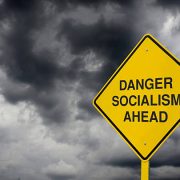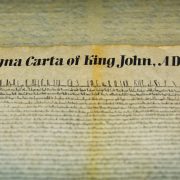When I decided to read and live-blog The Road to Serfdom by F.A. Hayek, I will admit I did not fully understand what I had signed up to do. Reading excerpts from the book is one thing, but endeavoring to read the book in its entirety and also write my accompanying thoughts was an entirely different feat altogether.
Even though I knew ahead of time that I would not always agree with Hayek, I was well aware of his incomparable intellect. And I knew I needed to do my due diligence to pay his prize-winning work the respect it deserved. As it turns out, doing so took a lot of effort not only through reading Hayek’s work, but through understanding the historical setting in which it was written.
But understanding the economic and political factors of the two World Wars alone wasn’t enough because Hayek doesn’t limit his economic perspective to only that of the recent events of his own day. Instead, he briefly but concisely explains the very foundations of liberalism and how the modern political trajectory was threatening to undo all the progress of the 19th-century.
Hayek takes the reader on a historical journey that traces the roots of free market economics along with the rise of totalitarian governments. Both topics of course not being mutually exclusive to Hayek’s primary cause of writing the book.
While the bulk of Hayek’s work is contained within 15 chapters, in the final sixteenth chapter, Hayek concludes his work and spells out his final message to the reader: Do not let history repeat itself.
What Is Past Is Prologue
Hayek is quick to point out that, “The purpose of this book has not been to sketch a detailed program of a desirable future order of society.” And while he may not have painted a picture of what his ideal society may look like, he does tell the reader what types of government coercion we should avoid at all costs.
Above all things, this book presents an opportunity for the reader to have a positive impact on history by first learning from it. Hayek has taken a justifiably ominous tone while explaining how totalitarians rise to power and then devastate the economies and people they oppress.
Yet, as hopeless and frustrated as Hayek may seem at times, the book is at its core a beacon of hope that, if used correctly, illuminate the future path toward freedom.
As Hayek says:
A great deal will depend on how we use the opportunity we shall then have. But, whatever we do, it can only be the beginning of a new, long, and arduous process in which we all hope we shall gradually create a world very different from that which we knew during the last quarter of a century.
Continuing, Hayek says:
The important thing now is that we shall come to agree on certain principles and free ourselves from some of the errors which have governed us in the recent past.
Hayek’s ultimate hope is that each reader of his book will understand the important role they play as individuals. As Hayek has demonstrated in his book, the individual is the greatest threat to the totalitarians and the collectivists of the world. The individual has been a thorn in the state’s side that has prevented it from total abuse of power since the beginning of time.
But it is up to each reader of the book to heed Hayek’s warnings and prevent the past from occurring once again.
As Hayek writes:
If we are to build a better world, we must have the courage to make a new start—even if that means some reculer pour mieux sauter [strategic withdrawals]. It is not those who believe in inevitable tendencies who show this courage, not those who preach a “New Order” which is no more than a projection of the tendencies of the last forty years, and who can think of nothing better than to imitate Hitler.
So as I finish this book, I would implore others to read it and take a lesson from F.A. Hayek. If he believed the country was in grave economic danger in 1944, the stakes are even higher in our present day.













